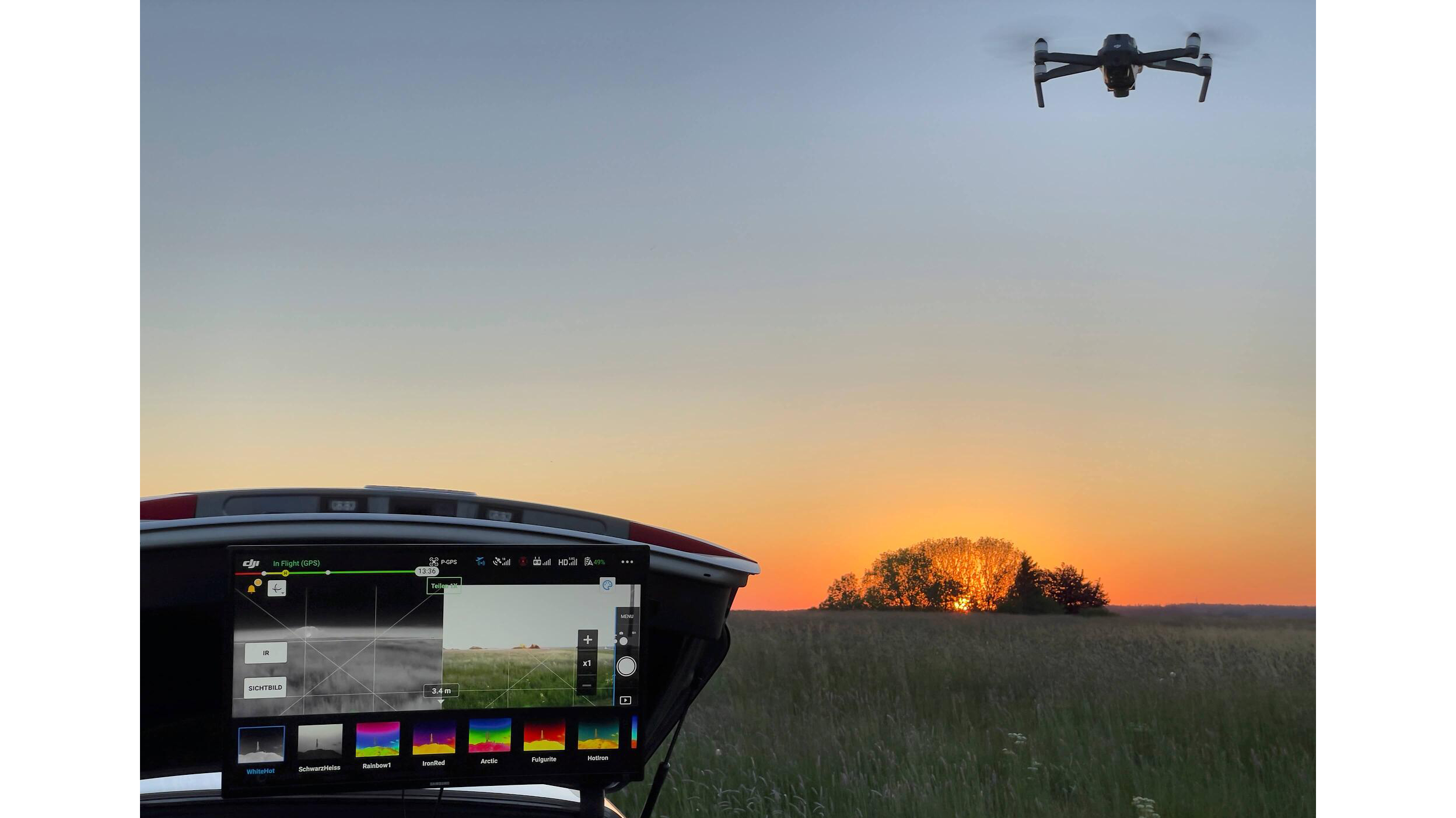This cute baby deer was saved from a gruesome fate thanks to DJI's thermal drone technology
Thanks to technology and DJI thermal drones baby deer are being saved from gruesome fates!

DJI wildlife protection drones are working alongside and helping farmers and conservationists locate and save nesting fawns in Switzerland from a gruesome fate.
Ever since the release of Disney’s tear-jerker cartoon Bambi in 1942 people around the world have had a special affection for baby deer. So, it may come as a shock to discover that every year hundreds, maybe even thousands, of fawns are accidentally killed by farmers and their mowers as they tend their fields. Just a tearful as the opening scene of Bambi!
• Read more: What's the best DJI drone?
We are pleased to share, however, that innovators, conservationists, and commercial drone pilots are now teaming up to create a life-saving solution that sees thermal drone technology deployed to protect vulnerable baby deer. To find out more about this amazing project take a look at the video below – with English Subtitles provided.
Between late April and early Summer, a female deer gives birth to one or two fawns who she protects from predators by nesting in the tall grasses of meadows and even domestic lawns. Unfortunately, these breeding patterns clash with farmers’ need to mow those meadows for hay. It is almost impossible for a mower operator to recognize the tiny figure of a baby deer, tucked away in the tall grass. To make matters worse, when confronted by danger a fawn’s natural instinct is to remain completely still making it that much harder for the mower operator to avoid killing or seriously injuring them.
Until now, the sole solution to this problem has been for teams of farmers and dogs to manually check every field for nests – a laborious, not to mention hit-and-miss method because of the difficulty of spotting the deer in the first place. It is also largely ineffective since newborn fawns do not have a distinct scent for dogs to follow. This extremely time-consuming and costly task means two to three people are only able to cover two hectares an hour, and that a single farmer’s entire collection of fields may take several days if not more.

To confront this issue, German association Flugmodus e.V have turned to drone technology. Founded in 2020, the group has been working with drone supplier DroneParts.de to develop wildlife protection drones that utilize the powerful visual and thermal cameras mounted on a DJI Mavic 2 Enterprise Advanced (M2EA) so that farmers can quickly and easily spot fawns in their nests.
The best camera deals, reviews, product advice, and unmissable photography news, direct to your inbox!
Prior to mowing a field, an M2EA is flown above to identify any fawns hidden within the grass from “hotspots” on the thermal camera. This works in tandem with the visual camera that allows a ground search team to efficiently locate the fawns and move them to a safer place.
After the mowing is complete, the fawns are released to a spot where they remain protected within the tall grass. Interestingly, this method has no impact on the doe’s ability to find her young again, as the amount of tall grass will leave no human scents on the baby deer.
Lightweight and portable, the M2EA is the perfect tool for such a job – characterized by its 640x512px thermal camera and a 48MP visual camera which supports up to 32x digital zoom. It is this dual imaging (or Split Mode) that makes the process so practical, as one can compare the thermal camera image with the visual camera image in real-time. This means that operators can quickly identify potentially nesting deer from thermal hotspots before getting a visual confirmation. At the same time, it is also equipped with omnidirectional obstacle sensing and an RTK module that provide centimeter-level positioning accuracy making it both simple and safe to operate.

To make things easier, the Mission Flight setting on the DJI Pilot app can create an autonomous flight path. Operators simply set a defined area for checking, or specific waypoints, and then select the required altitude. For these wildlife protection operations, Flugmodus e.V recommends a height anywhere between 40-80m, with 60m the optimal altitude. While higher altitudes will ensure a quicker operation because the drone can cover greater areas in a shorter time, lower altitudes provide better resolutions which can be important for spotting the elusive fawns. For an operator to search a field properly and ensure everything has been covered, the overlap should also be set to 10%.
So far, the drone wildlife protection initiative has proven highly effective. In Graubünden, Switzerland, for instance, similar technology was used during the harvest season with around 450 fawns saved. And it is hoped that something similar could be used to help not just deer, but a whole host of other wildlife in precarious situations. As such, the renowned Swiss university and research center, École Polytechnique Fédérale de Lausanne, has hailed the efforts as 100% effective.
Read more:
Best camera drone
DJI Mavic 2 review
Best drone for kids

For nearly two decades Sebastian's work has been published internationally. Originally specializing in Equestrianism, his visuals have been used by the leading names in the equestrian industry such as The Fédération Equestre Internationale (FEI), The Jockey Club, Horse & Hound, and many more for various advertising campaigns, books, and pre/post-event highlights.
He is a Fellow of the Royal Society of Arts, holds a Foundation Degree in Equitation Science, and holds a Master of Arts in Publishing. He is a member of Nikon NPS and has been a Nikon user since his film days using a Nikon F5. He saw the digital transition with Nikon's D series cameras and is still, to this day, the youngest member to be elected into BEWA, the British Equestrian Writers' Association.
He is familiar with and shows great interest in 35mm, medium, and large-format photography, using products by Leica, Phase One, Hasselblad, Alpa, and Sinar. Sebastian has also used many cinema cameras from Sony, RED, ARRI, and everything in between. He now spends his spare time using his trusted Leica M-E or Leica M2, shooting Street/Documentary photography as he sees it, usually in Black and White.

